The Moth Life Cycle of Common Clothes and Carpet Moths
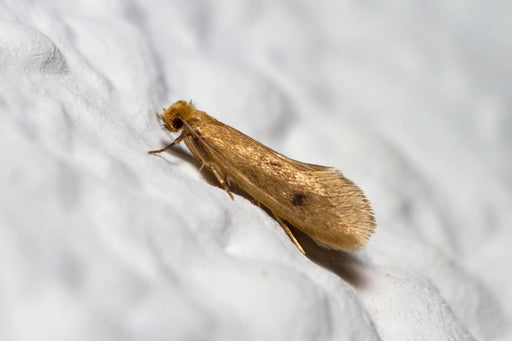
Despite their tiny size and often harmless appearance, carpet and clothes moths can unleash untold levels of chaos in your home. It’s not the adult winged moths themselves but their moth larvae that are rice-sized gods of cloth destruction. Not only will the larvae chew holes in your expensive wool clothing or antique carpets, but they can leave an unsightly mess behind too.
If you have a moth problem, you need to know their life cycle, so you can target them during the most opportune moment. Here is everything you need to know about the moth life cycle and how to implement moth prevention strategies effectively.
What are Carpet and Clothes Moths?
There are a few species of moths that prey on the keratin fibers of clothing and carpets.
Identifying Carpet and Clothes Moths is simplified by looking at their coloring and size, though they are usually classified by whatever they have infested, such as your closet. However, there is no actual difference between carpet moth and clothes moths. If they are chewing away on your clothes, then the antique rug is also at risk.
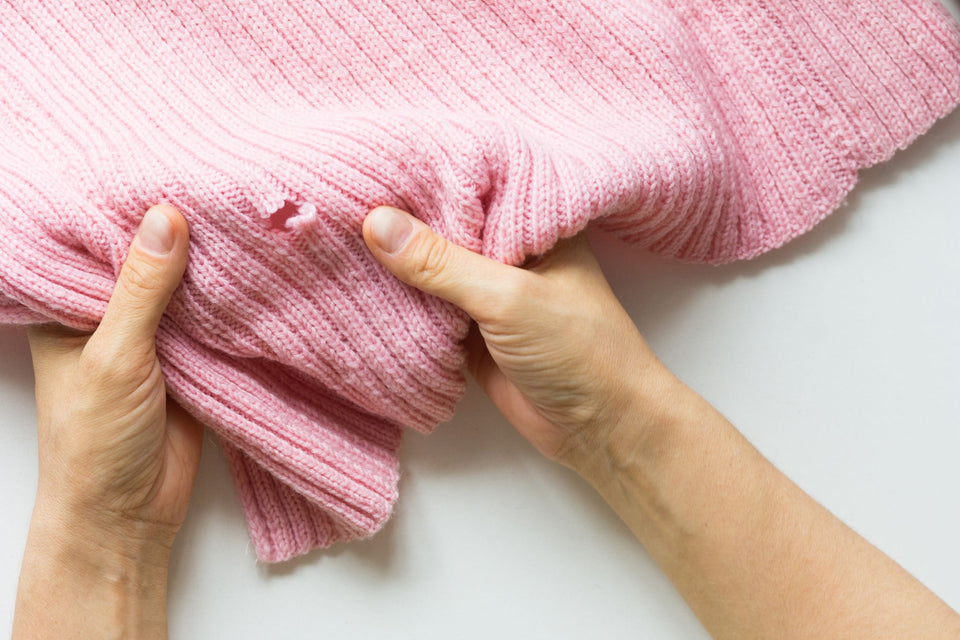
The two species of moth that feed on fabrics-or rather, the keratin present in fabrics-are the webbing moth and case making/case-bearing moth. This is why case making moths and webbing moths will build colonies where keratin rich fibers are present, such as your silks, furs, and wools. Furthermore, because these fabrics can hold moisture, in which moths and their larvae can “drink” from, any food, drink, or sweat stains will make moths gravitate to clothing or carpets. Using moth prevention products, such as moth traps, can help safeguard your home.
What do Webbing Moths Look Like?
Also known as a Common Clothes Moth, the webbing moth (Tineola bisselliella) is golden around the head and has whitish wings. They are more active at night and will become less active the older they get.
What do Case-Bearing Moths Look Like?
Case-bearing or Case Making Moths (Tinea pellionella) are seen throughout the year. They have mottled black and brown wings with a fringe at the bottom edge.
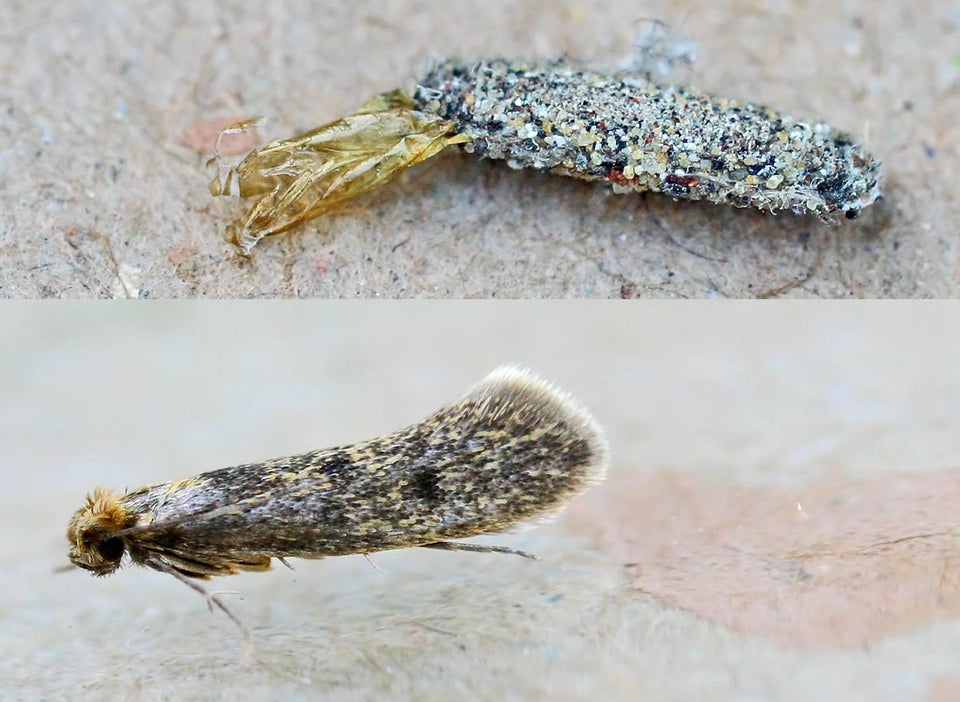
Image Courtesy of ©entomart
What is the Clothes Moth Life Cycle?
Like most moths, clothes and carpet moths have a distinct life cycle. There are four stages of the moth life cycle: eggs, larvae, pupa/cocoon, and adult. Each stage represents a significant step in a moth’s lifespan. Knowing the life of a moth is important when trying to handle an infestation, too.
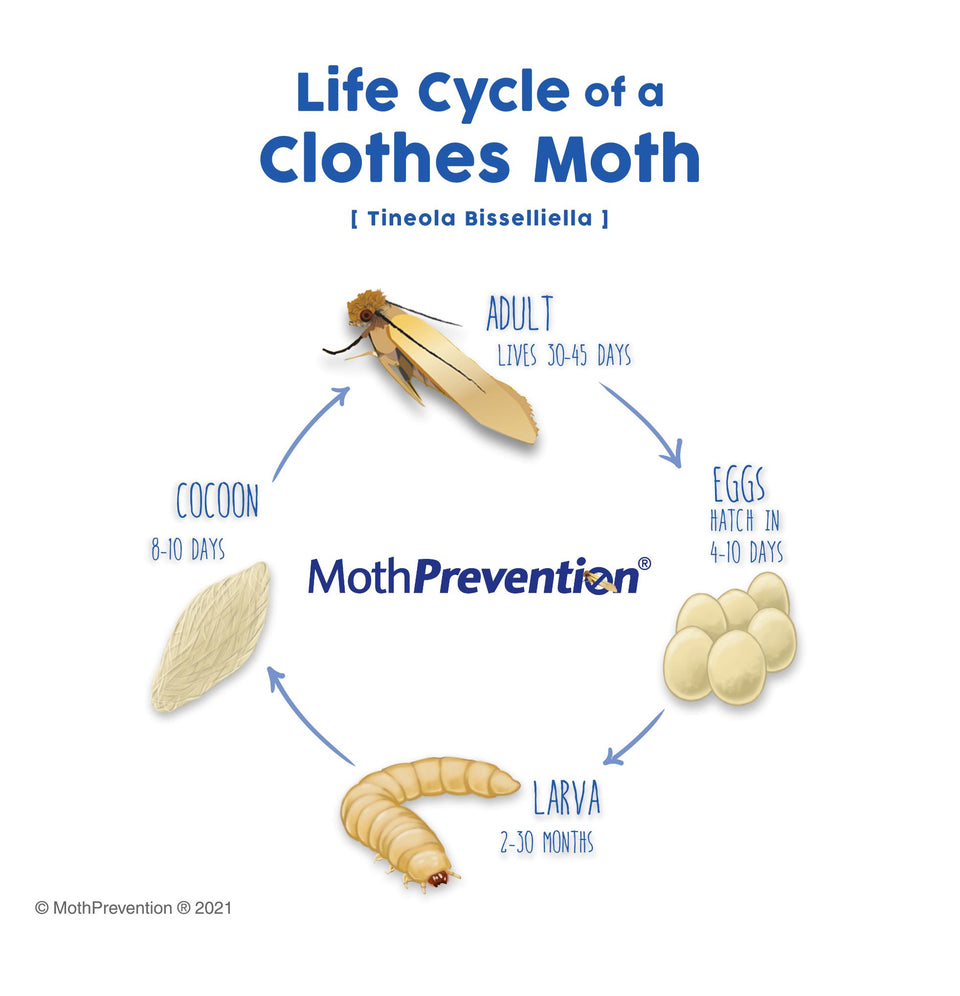
1. Egg Stage of Clothes Moths
At the beginning of a moth life cycle, there is the egg. Upon choosing an appropriate nest, adult female webbing moths and case-bearing moths can lay around 40-50 eggs at a time. Sometimes, that number is as high as 100 eggs. These are not laid all at once but over a short span of days.
It usually takes 4-10 days for moth eggs to hatch, though this depends greatly on humidity and temperature levels. Moth prevention in wardrobes can include using moth-proof garment bags and moth-proof clothes storage to keep eggs from hatching near your fabrics.
2. Larval Stage of Clothes Moths
The next stage is where moths are most destructive. With an insatiable hunger, the newly hatched larvae swarm their food source and gnaw away, gaining nourishment that helps them grow. Imagine finding hundreds of moth larvae crawling all over your woolen blankets and cashmere sweaters… It’s horrifying.
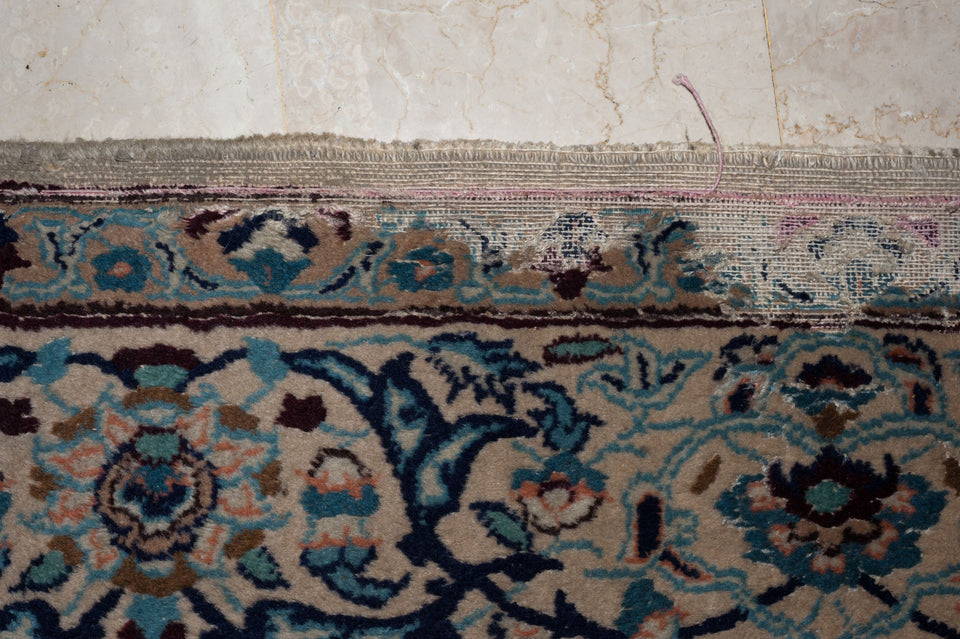
And as you can imagine, they do not stop until it is time to become a cocoon. However, there is no set time for larvae to decide it’s time to transform. Sometimes, it takes only 2 months. Other times, clothes moth larvae will remain in that stage of life for 30 months-2.5 years. This is why clothing moths can be such a nuisance because they will survive through the cold months while feasting on keratin-rich fabric. Using our clothes moth pheromone traps can help stop the larvae before they reach adulthood.
3. Pupal Stage of Clothes Moths
When temperatures are warm enough, larvae will pupate. Not many people will notice this stage, because the moth pupae are usually hidden out of sight, in the darkened corners of closets or under radiators. The pupal stage will last up to 50 days, though it is usually between 8-10 days before adult Clothes or Carpet Moths emerge.
Here’s a fun fact for you: when moths (and butterflies) are undergoing metamorphosis into their adult stage, there are special cells within their bodies that are activated. Those cells break the body down into a heap of gunk that gradually remodels itself. This process is called histolysis. The speed of histolysis is impacted by the environment, which is why moths in warmer climates tend to hatch and mature much more rapidly than those in cooler environments.
If you suddenly notice moths fluttering about, go look for debris or remnants of their cocoons. You can usually find webbing cases, from which webbing moths get their name.
4. Adult Stage of Clothes & Carpet Moths
While adult case-bearing moths and webbing moths are harmless by themselves, their presence within your home should raise some questions. Interestingly, adult moths cannot eat or drink. Their only goal is to find mates and lay their eggs wherever there is enough food for their moth larvae to thrive.
Some adult moths live only for a week. Others can live for up to 10 months or up to a whole year. Female moths die after laying their fertilized eggs, while males tend to perish soon after mating.
What do Moth Eggs Look Like?
Webbing moths and case-bearing moths both lay eggs amid the fabrics the hatchlings will devour. The moth eggs are very tiny and hard to spot (about 0.5mm), but they look like small white orbs laid in a line or cluster. Depending on the color of the fabric, you may notice the eggs more easily, especially if hundreds have been laid in one spot.
What do Moth Larvae Look Like?
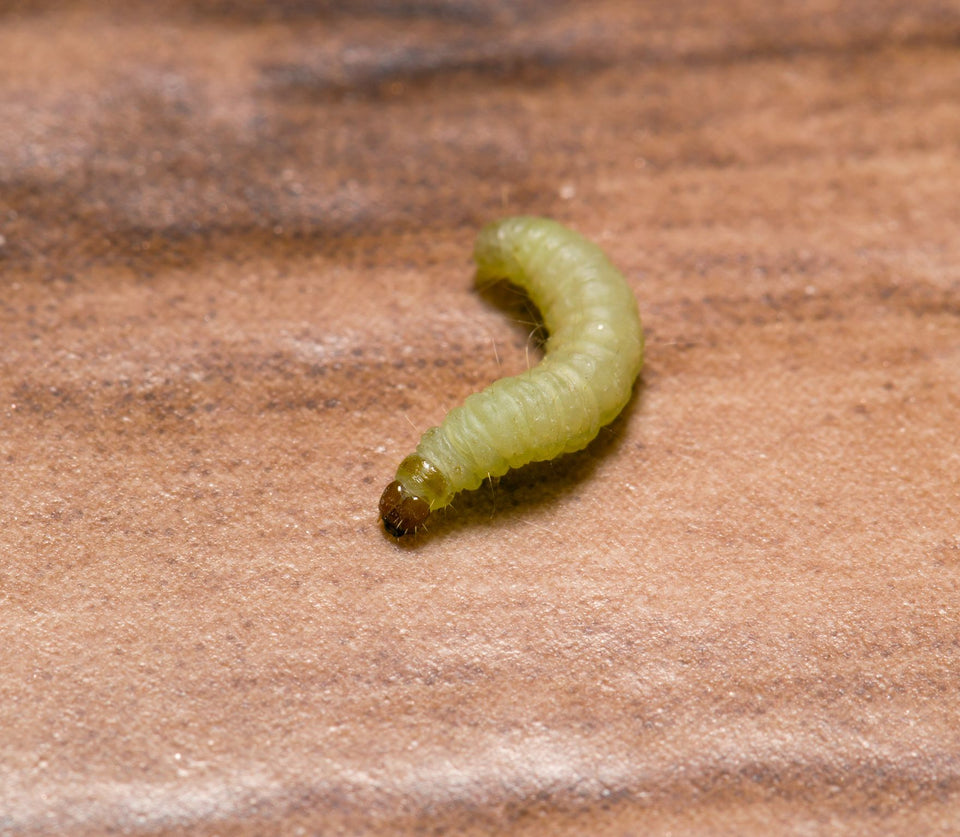
Moth larvae look a little bit like white rice grains wriggling all around. They are only a few millimeters long upon hatching but will soon grow to about 1.0-1.5 cm long. Both webbing moth and case-bearing moth larvae have white or yellow bodies and round brown heads. They may leave behind trails of webbing as they progress towards their pupal stage.
Once moth larvae are active in your home, using our moth traps can help reduce their numbers before they mature into adults and continue the cycle.
How Long Do Moths Live?
When you take into account the factors that affect the life cycle of moths, it might seem like they live forever.
To recap:
- Egg-laying takes 4-7 days.
- Eggs hatch in 4-10 days.
- Larvae eat for 2-3 months in favorable conditions or up to 30 months.
- Metamorphosis in a cocoon can take between 8-10 days (sometimes up to 50 days).
- Adults usually mate and lay their eggs within 4-6 days of hatching.
So, when unaffected by modern technology and heating or the climate, the entire lifespan of a moth is anywhere from ½ a year to 3 years.
Why Learn About the Clothes and Carpet Moths Life Cycle?
Carpet and Clothes Moths are pests that need to be ousted from the household before they cause too much havoc. Understanding the stages of a moth life cycle is an important step in protecting your home from infestation. If you can tackle the problem during the moths’ inactive periods, you will have less to worry about in the future. Investing in our moth traps can help break the cycle before it spirals out of control.

FAQs
How do moths reproduce?
Ever wondered how moths reproduce? Understanding the mating habits of moths can help you keep potential infestations under control. Here are the facts about moth reproduction.
- Moth mating starts as soon as a female emerges from a cocoon. They release pheromones to lure male moths. This means if female moths hatch in your home, they will draw even more moths in from the outside.
- After mating takes place, the female will search for a place to lay eggs.
- Moth eggs hatch and the larva emerge and begin feeding on the preferred nutrient source. For Clothes Moths and Carpet Moths, natural fibers like wool, silk, and fur are common food courses. Pantry Moths consume cereals, grains, and other household dry goods.
- Moth larvae feed for 3 months on average. However, in less favorable conditions, they can live and tunnel through fabrics or carpets for up to 30 months! They will only pupate when the conditions are right, so the weather, climate, and season lengths in your area will impact how long they continue to feed before cocooning.
- When the time is right, the larvae will go through metamorphosis and spin a cocoon. This can take anywhere from 8-50 days. Once again, it depends on the conditions.
- Adult moths emerge from the cocoons, mate, and can start laying eggs again within four short days!
To help prevent moth infestations, using our moth traps, such as clothes moth pheromone traps, pantry moth traps, and carpet moth traps, can significantly reduce moth populations before they become a problem.
How fast do moths reproduce?
It will depend on the moth species. Generally, adult female moths emerge from cocoons, mate, and lay around 50 eggs. All of this happens in a period of 4-7 days. The eggs then hatch 4-10 days later. So, in about two weeks, an entire generation of moths can be causing new destruction.
Sometimes, the local weather conditions and temperatures can delay or speed up hatching and larval development. After hatching, most of the lifecycle of a moth is spent in the larval stage. This is the most destructive stage in a moth's life cycle. Then, they spin cocoons and it all starts again.
What is the lifespan of a moth?
Altogether, a generation of moths can go from egg to adult in 1/2 of a year to 3 years. Then, the moth life cycle repeats.
So, the lifespan of an adult moth is only four days, but those are the final four days of its life. The other 1/2 of a year to 3 years was spent as a destructive larva.
How do Clothes Moths reproduce
Clothes Moths reproduce like other moth species. They mate and lay eggs that then hatch into larvae. The larvae eat materials which contain keratin (an animal based fiber) like wool sweaters, feathers, fur coats, and then spin cocoons. An adult moth will emerge from that cocoon and mate. Then, the cycle continues.
How quickly do moths reproduce?
Though a generation of moths may take between six months and one year to mature, they reproduce as soon as they emerge from cocoons as adults. Within 4 days of emerging from cocoons, they lay eggs.
How do Pantry Moths reproduce?
Pantry Moths reproduce just like other kinds of moths. They mate, look for a good place to lay eggs (like in a bag of bird seed), and die. The moth eggs hatch into larvae that eat grains, flour, cereal, seeds, etc. Then, the larvae spin cocoons. When they emerge as adults, they mate and the cycle repeats.
Using our pantry moth pheromone traps can help eliminate pantry moths before they take over your kitchen.
Where do moths lay eggs?
So where do moths lay their eggs? It depends on the type of moth. Clothes Moths seek dark, quiet places with plenty of natural fibers for the larvae to consume when they hatch. Clothes Moths prefer places like closets or attics. Similarly, Carpet Moths seek secluded locations with edible fiber materials.
But where do Pantry Moths lay eggs? Usually, in your pantry near tasty food goods for their larvae to munch through. However, if you have dry food goods stored in a garage, shed, or even in your car, they will lay eggs there too.
How long do moth eggs live?
Moth eggs live 4-10 days after they have been laid and then hatch. This means that sticky eggs could be hidden on furniture or clothing that you bought at a garage sale. For this reason, it is best to freeze items for up to 72 hours before bringing them into your house. Especially, if you have any misgivings or suspicion of moth eggs. This will kill the eggs before they can hatch into destructive moth larvae.
About MothPrevention
MothPrevention® speak to customers every day about their clothes moth issues - clothes moths are a species that are ever increasing and that can cause significant damage to clothes, carpets and other home textiles.
To date, we’ve helped over 250,000 customers deal with their moth problems. We have developed professional grade solutions including proprietary pheromones and trap design, not available from anybody else in the USA.





